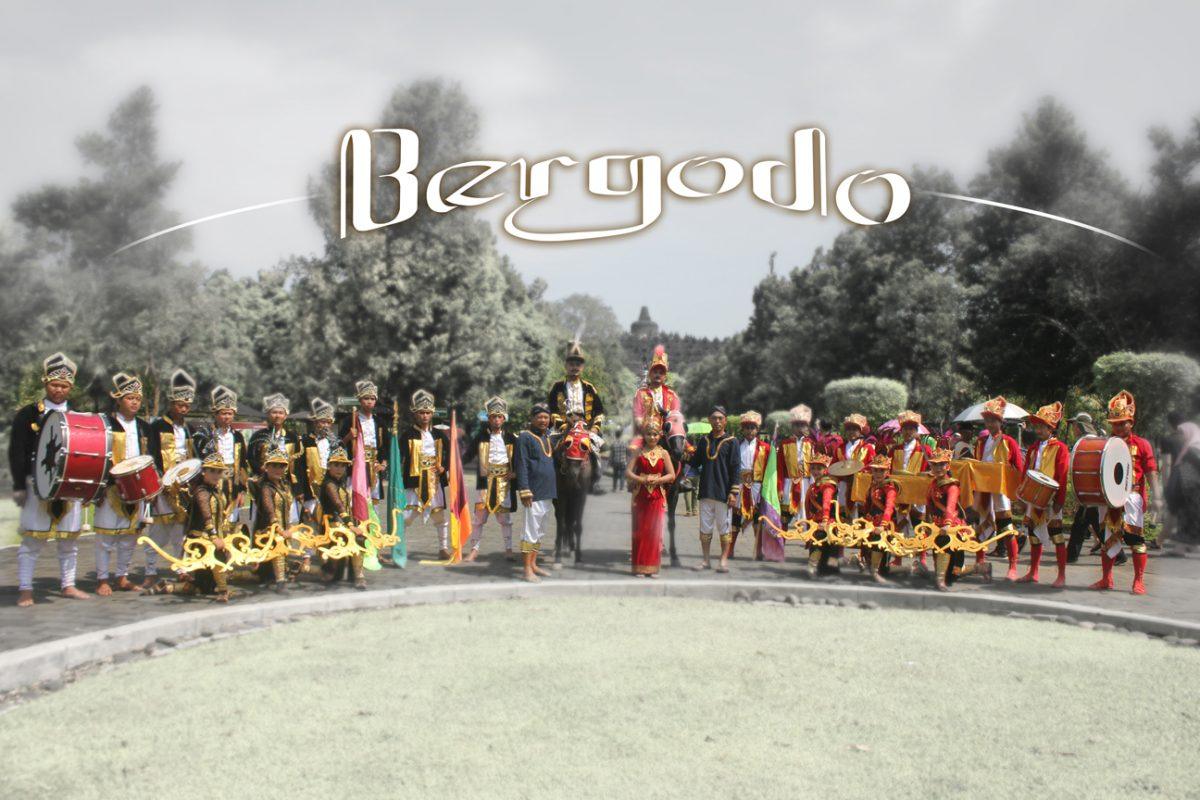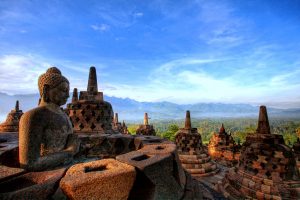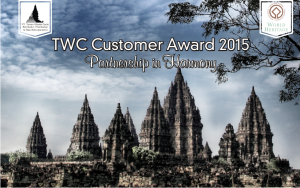The Kraton Yogyakarta Army

The Sultanate of Yogyakarta was founded from the disintegration of the Mataram Sultanate when two princes fought over the accommodation of the Dutch by the Sultanate of Mataram. One of the princes, who would became the first Sultan of Yogyakarta, created an army that exists until today despite being reduced by treaties. It is an Army founded in a form of feudalism but embraced gunpowder weapons in the mid-18th century on its founding. The Kraton Army was formed by the first sultan of Yogyakarta, Hamengkubuwono I, and originally comprised 13 brigades or regiments.
Each of these units listed below comes from a distinct geographical location surrounding the Kraton. It is almost feudal in the sense that they are still provided with land and are expected to give military service as well as produce from the allotted land. Each unit is led by a captain who is assisted by a number of panji, like a sergeant major who issues orders and regulates the troops. There are also assistant panji. Each section is led by a sergeant. All the captains are under the command of a pandega while the highest rank is the Manggalayudha. Some of the units also have unique command arrangements although they are not listed below. It takes a long time to join the units as there is a long waiting list. By way of explanation, these units have a slow march that looks like a rocking motion as they move forward from one leg to another. Also, the heirlooms mentioned below are those sacred artifacts from the Kraton’s collection that are carried by the respective units often because of the magic or spiritual significance of the object.
The units’ hierarchy is listed below.
1. Wirobraja
Flag: Coconut sugar.
Costume:A red overcoat and trousers, white stockings and black vantoffel shoes. They also have a redsatin wrap. The hat is called a Lombokan or red chili.
Heirloom: Kanjeng Kyai Santri and Kanjeng Kyai Slamet.
Instrument: Drums and flute. The melodies are Dayungan (for quick marching) and Retadadeli (for slow and normal marching).
Weapon: Firearms and spears.
Notes: The Wirobraja are always first as their role was forming the front line for battle. There are four panji, eight sergeants, 72 soldiers and two standard bearers. Usually the names of the soldiers of this unit starts with Brojo.
2. Daheng
Flag: Bahning Sari
Costume: White shirt and trousers with a red horizontal stripe across the stomach. The Mancungan hat is black with a red and white cock feather.
Heirloom: Kanjeng Kyai Jatimulya.
Instrument: Drums, flutes, a little gong, tom-tom drums, pui-pui and kecer. The melodies are Ondal-andil (for quick marching) and Kenobo (for slow and normal marching).
Weapon: Firearms and spears.
Notes: These soldiers traditionally originated from Gowa in Sulawesi and all the soldiers’ names contain Niti. There are four panji, eight sergeants, 72 soldiers and one standard bearer. In the early 1800s this unit was approximately 100 strong.
3. Patangpuluh
Flag: Cakragara.
Costume: A red overcoat and red knickerbockers over white pants, black boots and a red and black hat.
Heirloom: Kanjeng Kyai Trisula.
Instrument: Drum, flute and trumpet. The march melodies are Bulu-bulu (for quick marching) and Gendara (for slow and normal marching).
Weapon: Firearms and spears.
Notes: Historically this unit was known to contain the bravest and most fiercest fighters. All the soldiers of this unithave their names accompanied by Himo. There are four panji, eight sergeants, 72 soldiers and one standard bearer. They come from west of the kraton.
4. Jagakarya
Flag: Papasan.
Costume: A golden yellow overcoat. The stockings are dark blue with black shoes. The hat is a black winged type.
Heirloom: Kanjeng Kyai Trisula.
Instrument: Drum, flute, trumpet. The melodies are Tameng Madura (for quick marching) and Slagunder (for slow and normal marching).
Weapon: Firearms, spears and keris.
Notes: All the soldiers in this brigade have Parto accompanying their names. There are four panji, eight sergeants, 72 soldiers and one standard bearer. They come from south of the Kraton.
5. Prawirotama
Flag: Geniroga.
Costume: Black coat and white trousers. The outer knickerbockers are red and they wear black boots. The hat resembles coral.
Heirloom: Kanjeng Kyai Trisula.
Instrument: Drum, flute and trumpet. The melodies are called Pandeburg (for quick marching) and Mars Balang (for slow and normal marching).
Notes: Historically this unit had 1000 members from the former Mataram Sultanate that helpedPrince Mangkubumi fight the Dutch V.O.C.but now there are four panji, four sergeants, 72 soldiers and one standard bearer. All the soldiers in this unit have Prawiro accompanying their names. They come from the area south of the Kraton.
6. Ketanggung
Flag: Cakraswandana.
Costume: A typical ketanggung lurik cloth and black knickerbockers over white trousers with black boots. The hat is called Mancungan.
Heirloom: Kanjeng Kyai Nanggolo.
Instrument: Drum, flute, trumpet and little gong. The melodies are Bergola Milir (slow or normal marching) or Lintik Emas (quick marching) and Harjuno Mangsah or Bima Kurda.
Weapon: Firearms with bayonets and spears.
Notes: There are four panji, eight sergeants, 72 soldiers and one standard bearer. They also served as prosecutors in the Kraton and would often act as guards for when the sultan travelled outside of the Kraton. Soldiers of this unithave names that end with Joyo.
7. Mantrijero
Flag: Purnamasidi.
Costume: Overcoat and traditional style trousers over white stockings with black vantoffel shoes. The hat is black in colour.
Heirloom: Kanjeng Kyai Cakra.
Instrument: Drum, flute and trumpet. The melodies are Plangkeman (for quick march) and Slagunder (for slow or normal marching).
Weapon: Firearms and spears.
Notes: There are eight panji, eight sergeants, 64 soldiers and one standard bearer. They are commanded by a Bupatior district administrator. Joyo, Bahu, Prawiro and Rono are the names associated with this unit.
8. Nyutra
Flag: Padma Sri Kresna and Podang Ngisep Sari.
Costume: Black overcoat and trousers with a dark blue and white cloth. There are two types of hats, a black kuluk and a cylindrical udeng.
Heirloom: Kanjeng Kyai Trisula.
Instrument: Drum, flute and trumpet. The melodies are Sureng Prang (for quick marching) and Tam-tama balik (for slow or normal marching).
Weapon: Firearms, spears and keris.
Notes: There are eight panji, eight sergeants, 46 soldiers and two standard bearers. They are used as escorts for the coronation ceremony and so do not have an actual war role. They were traditionally dancers as well and so that is still a requirement to join the unit. They come from east of the Kraton. Their names are normally taken from the wayang plays.
9. Bugis
Flag: Wulan ndadari.
Costume: Black trousers and coat. The hat is also black.
Heirloom: Nil.
Instrument: Drum, pui-pui, gong and small tom-tom. Their melody is the Endroloko.
Weapon: Spears.
Notes: Originally these troops came from the Bugis regions in south Sulawesi. They are tasked with guarding the Sultan’s Chief Minister as well as the guarding the Garebeg and other ceremonies. Their names normally include Rangsang. In the early 1800s and until now there are approximately 40 members.
10. Surakarsa
Flag: Pare Anom.
Costume: White coat and trousers, a cloth around the waste and sandals.
Heirloom: Nil.
Instrument: Drum and flute. The melody is the Plangkenan.
Weapon: Spears.
Notes: They have an officer called a Penewu, 64 soldiers and a standard bearer. They are tasked to guard the crown prince as well as the ‘mountain’ of offerings used in the Garebeg ceremony.
11. Sumoatmaojo
These are the personal bodyguards of the Sultan and come directly under his command. There are two panji and two sergeants as well as 16 soldiers. They wear chain mail and carry a large crescent shaped shield. They wear water buffalo hide clothing and a helmet but no shoes. They also carry unsheathed short swords. Their faces and bodies are covered with a yellow dust. When they are carrying out their bodyguard function they will often appear to be dancing. Wikipedia has a photo of one of the Sultan’s bodyguards from the 1880s.
12. Jager
From the Dutch term Jager meaning hunter. The unit comprises a panji, two sergeants and 58 soldiers. They have no flag nor special symbol nor do they have a special uniform but wear traditional Javanese clothes. They are armed with rifles.
13. Langenastro
This unit is tasked with guarding the Sultan during the Garebeg festival. They are additional troops within the Mantrijero Brigade. They wear the same uniform as the Mantrijero Brigade but do not carry a rifle, they are instead armed with a short sword.


